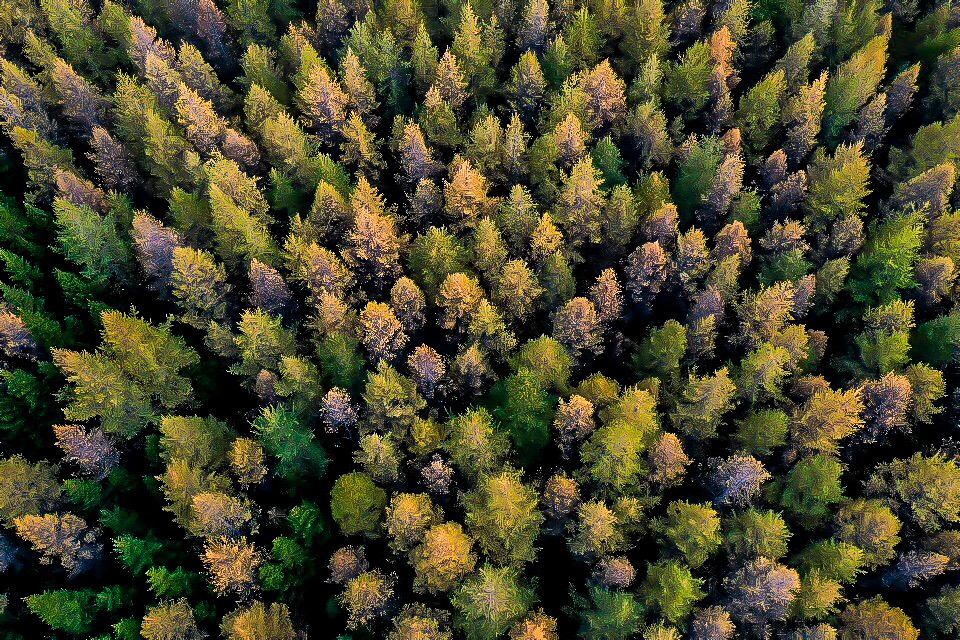
11. Hallormsstaðaskogur National Park
Hallormsstaðaskógur is Iceland’s first national forest and has been preserved since 1905. The area is a famous for its pleasant hiking trails, wildlife and collection of tree species. As trees only cover approx. 2% of Iceland, Hallormsstaðaskógur is very distinct place in Iceland and somewhat of an enigma. Hallormsstaðaskógur is a natural birch forest. In 1903 a nursing station was established there, and experiments were made with planting of foreign tree species. Now, Hallormsstaðaskógur has a unique arboretum where over 80 foreign tree species from 177 locations overseas.
In Hallormsstaðaskógur forest there are numerous great hiking trails. They are all family friendly and easy to locate. Maps of the forest can be found at the beginning of each hiking trail or at the Camping in Egilsstaðir.
Atlavík is a beautiful cove in Hallormsstaðaskógur. It is right by the lake Lagarfljót and there used to be a popular camping area. As it has no electricity, most of the campers nowadays choose the newer and more modern camping in Höfðavík which leaves this area more serene. Thanks to the trees of the forest, the weather is usually still, and it gets quite warm there in the summer.
In Hallormsstaðaskógur is a beautiful rock arch, through which the river Klifá runs. A beautiful spot and worth a photo.
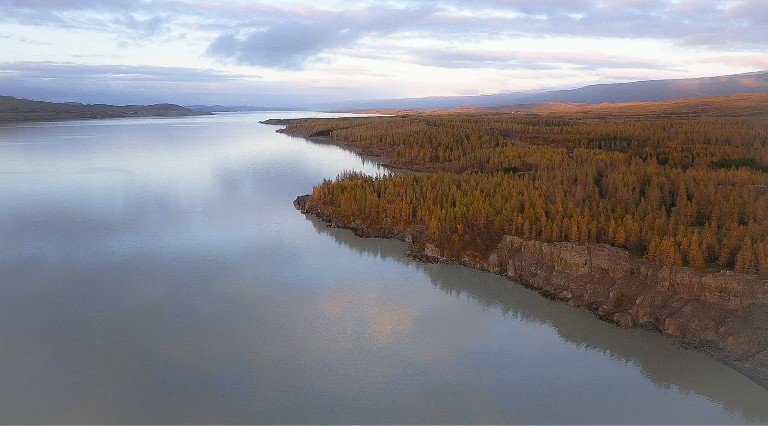
10. Lagarfljót
Lagarfljót lake with its surface measuring 53 km2 and it is 25 km2 long is the 3rd largest and the longest lake in Iceland. It is best known for its natural beauty and for its folklore about the Lagarfljót Wyrm. It has been spoken about since 1345. According to legend, the deep lake is said to hold a beast. A teenage girl, who lived on a farm by Lagarfljót lake got a golden ring from her mother. It was believed that if you put a heath-worm on top gold, the gold would grow. So the girl did just that, and stored it away. When the girl checked on the ring the worm had grown so much that the coffer in which it had been stored was about to brake. Frightened by this sight, the girl grabbed the coffer with the ring and the worm and threw it into the Lagarfljót lake. After a long while, people started to notice a serpent in the lake. It attacked boats crossing the lake, killing the passengers. It would even stretch onto the banks of the lake and sprout poison. It was not until two Finns were summoned to kill the worm and get the gold that people were able to defend themselves against this horrible beast. The Finns were unable to kill the Wyrm but with some sorcery they were able to tie it down, by its head and by its tail. Since then, the worm has not been able to attack anyone. From time to time it raises its humps and has been spotted on several occasions by different persons.
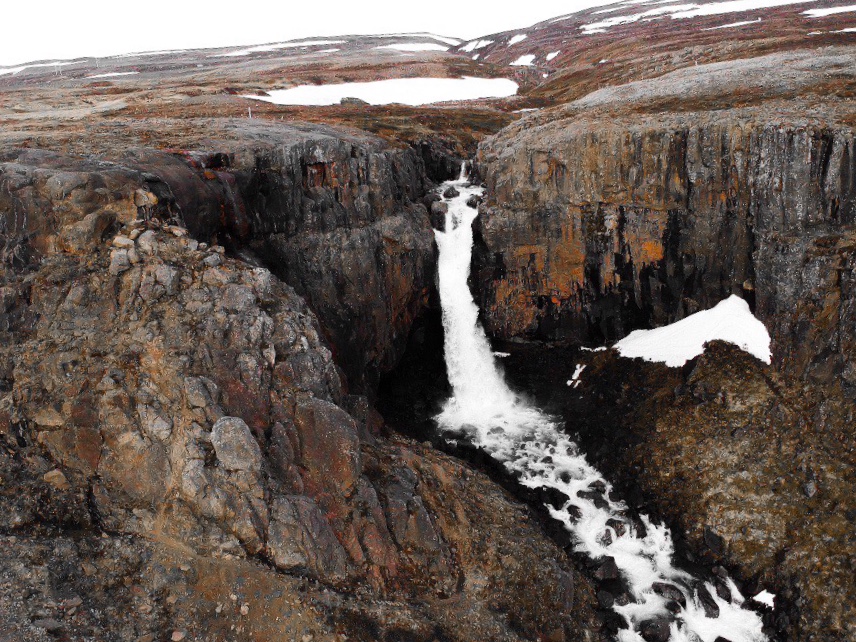
9. Fardagafoss
Fardagafoss is a scenic waterfall situated about 5 km from Egilsstaðir, along the road leading to Seyðisfjörður as it winds its way up the mountainside of Fjardarheiði. The ascent from the parking to the fall takes about half an hour. The trail leads hikers on the banks of the beautiful gorge and offers view over the whole valley. The hike is perfect for families as it is not difficult although the last stage of the trail is a bit harder. A chain is fastened in the cliff to get down to the water, but it´s worth it. Behind the waterfall is a small cave worth the climb. Fardagafoss has a legend to it, like so many other places in Iceland. A troll is believed to have lived in the cave and guarded it. The troll had a tunnel in the cave which lead all the way through the mountain to Seyðisfjörður. The cave has unfortunately collapsed but it is still possible to walk behind the waterfall and see the remains of the cave.
The name Fardagafoss refers to old laws and regulations. In the olden days, people in Iceland were only allowed to move in the period from May till the end of June. This period was called Fardagar, or “they days when you can leave”. Workers had in this short period the chance to relocate to another farm.
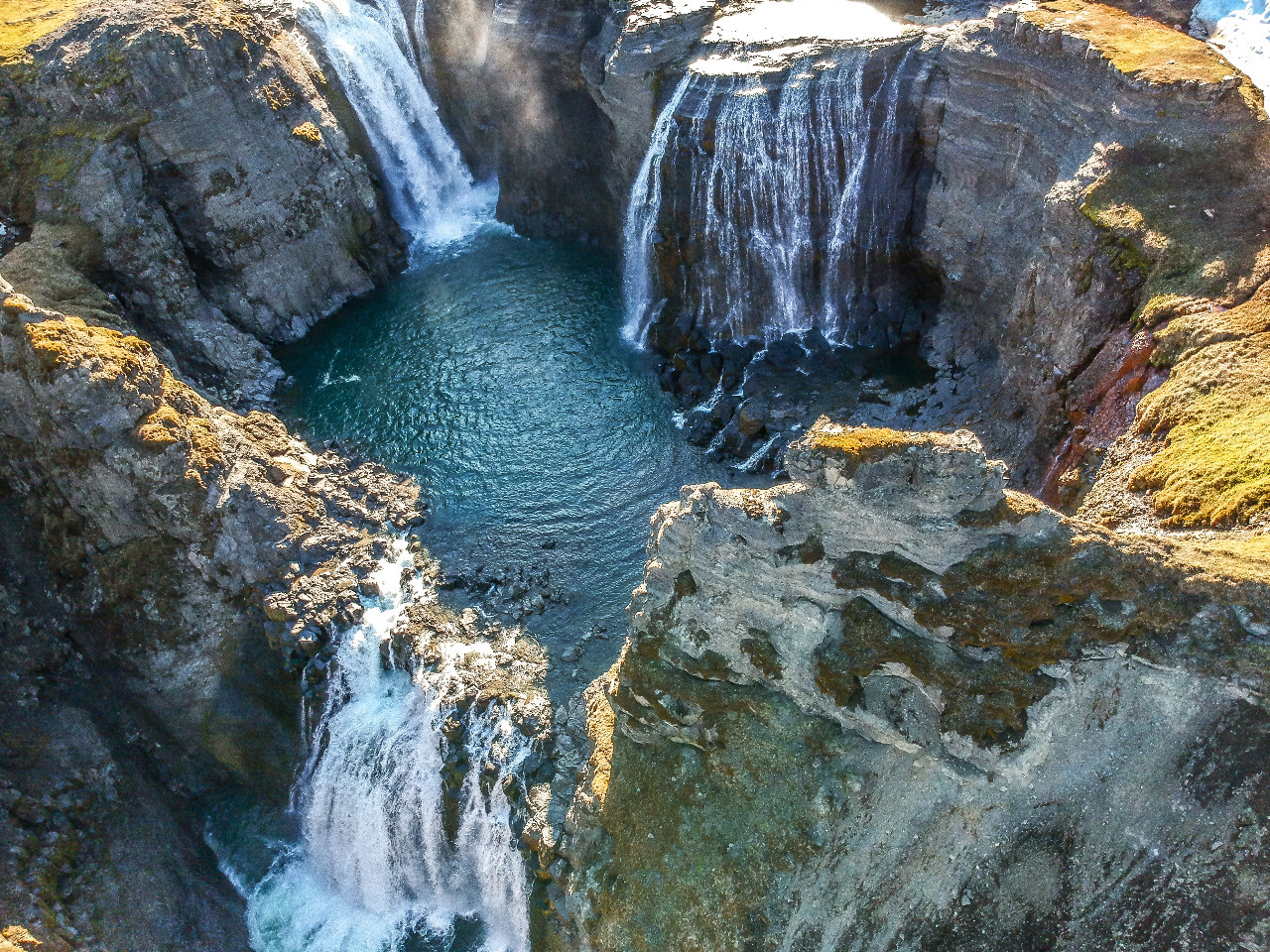
8. Waterfall circle and Laugarfell hot springs
The Waterfall Circle is a beautiful hiking trail that leads the hiker to five different waterfalls, some of them are among the most powerful in the region. The Waterfall Circle trail takes you along the banks of Jökulsá River, starting from the abandoned farm Kleif and leading through a birch wood. Very soon the first waterfall makes its appearance and as the hike continues the falls will appear one after the other. The hike takes approx. 6 hours and end at the Laugarfell Highland Hostel. At the hostel, warm pools await for a relaxing soak in the spring water.
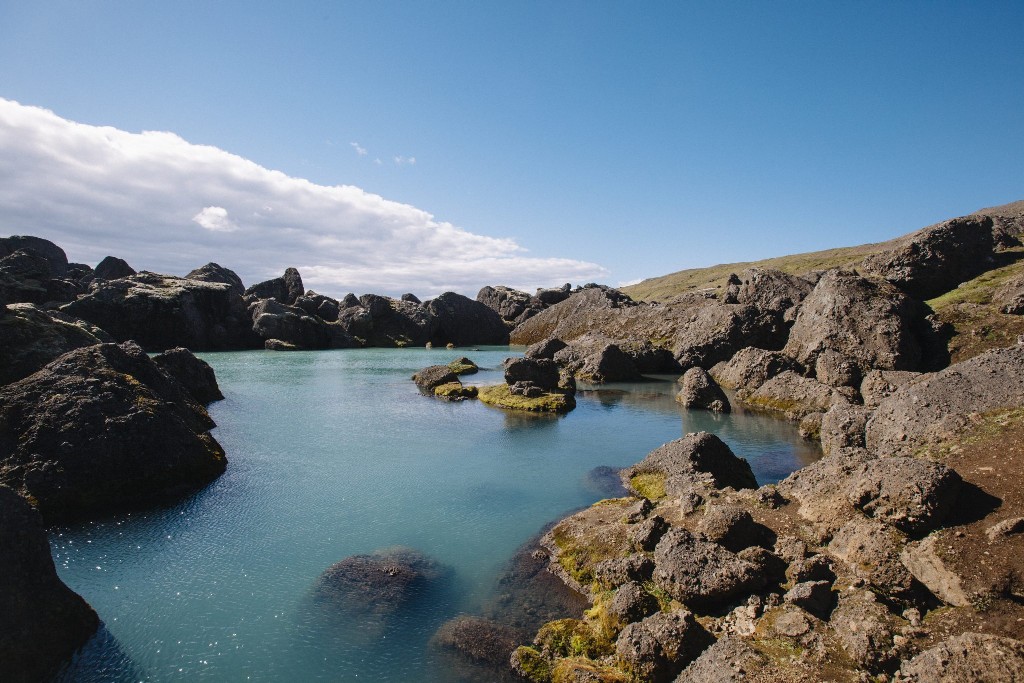
7. Stórurð
Stórurð (“The Giant Boulders”) is one of Iceland’s greatest natural wonders. Stórurð lies below the small glacier west of Dyrfjöll mountain. It was formed by giant rocks that the glacier broke from the mountain and carried a long way in the last ice age, or 10.000 years ago. This formed the gap or the “door” in the mountain that gives it the distinctive characteristics. Stórurð consists of gigantic tuff boulders, charming meadows, and enchanting ponds with blue green water. This wonderful scene can be reached in 2.5 hours on foot from Vatnsskarð pass. To enjoy Dyrfjöll and Stórurð a whole day plan is highly recommended.
Hikers start from the facilities cabin in Vatnsskarð on the route to Borgarfjörður eystri. The best time of year to hike to Stórurð is from the middle of July to the middle of September.
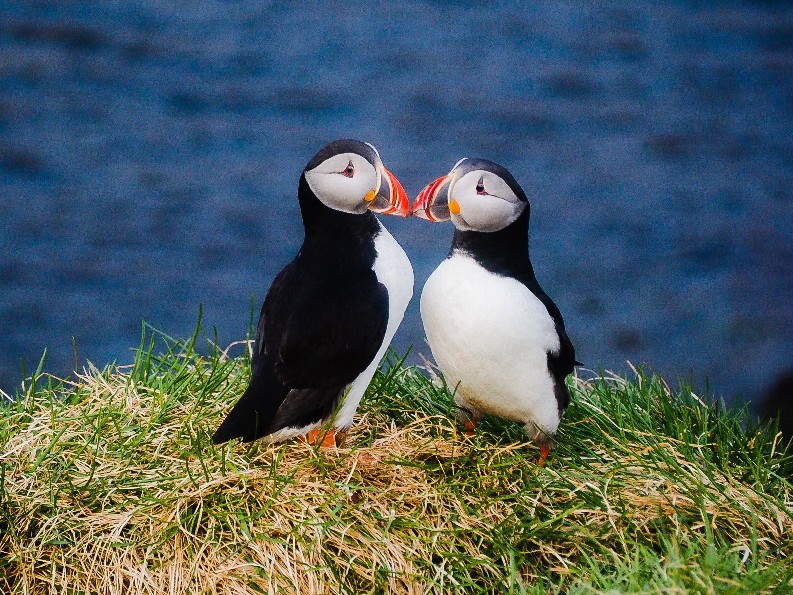
6. Puffins
Hafnarhólmi in Borgarfjörður eystri offers visitors probably the easiest and safest place to watch puffins in Iceland. The facilities are excellent with a shelter and wooden platforms that allows birdwatchers to get up close and personal with put disturbing the bird much or damaging their burrows. The puffins come to nest here from mid-April to Mid-August. It is estimated that 10.000 pairs of puffins nest here. All species at Hafnarhólmi are protected by law during the breeding season.
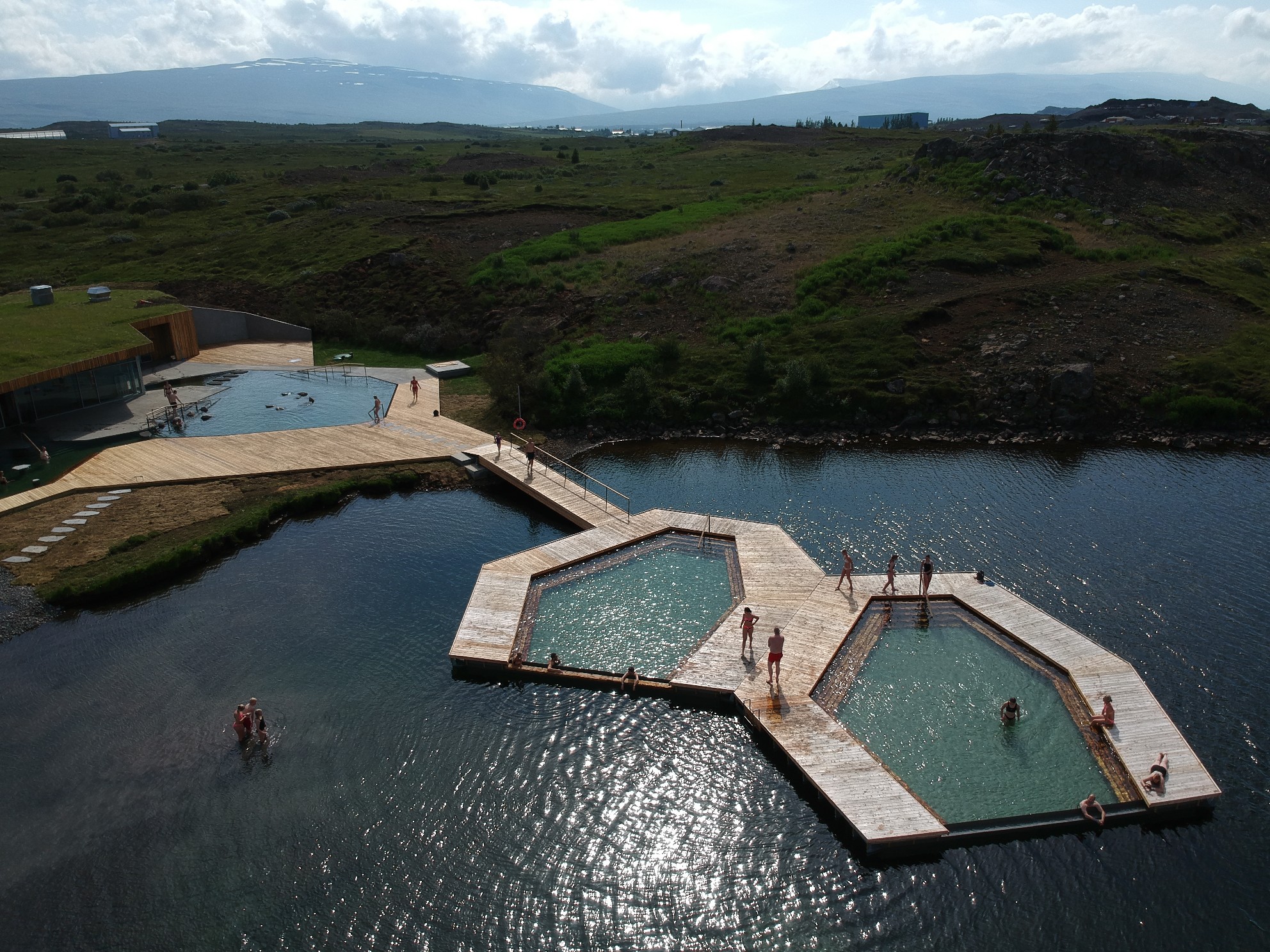
5. Vök Baths
Vök-Baths is a geothermal destination on the beautiful Lake Urriðavatn approx. 5 km. from Egilsstaðir. Vök-Baths is an essential stop to any visit. It harnesses the geothermal power of the region to create a unique bathing experience with amazing views of the rest of the lake and the surrounding area. Fully immerse yourself in Iceland’s unique and untouched landscape and become one with nature at the country’s first series of geothermal floating pools. An Icelandic hot spring destination like no other, the hot water is so pure, it is certified as drinkable. Compared to the rest of the country, there are relatively few hot springs in East Iceland making Vök Baths an attraction you won’t want to miss!
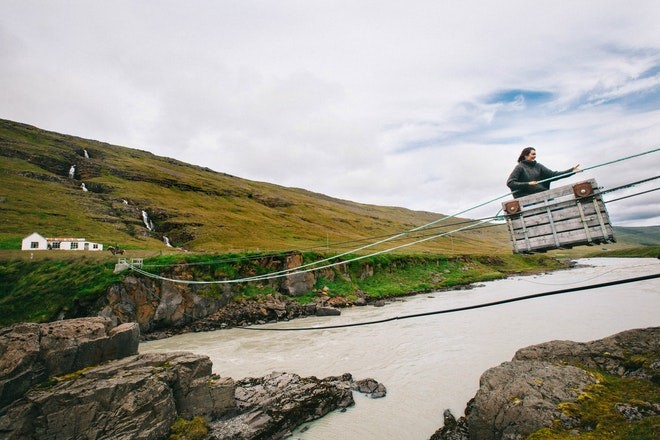
4. Wildneress center and a cable car
The Wilderness Center is an authentic and peaceful hideaway, located right on the edge of Northern Europe´s most extensive wilderness.
One can experience the spirit of the past through a variety of services, such as unique accommodation, local food, exhibitions, horse riding and hiking, stargazing/Aurora station, day tours, escorted tours, super jeep tours, and tailor-made tours.
The center’s tranquil and pleasant location, as well as the distinct choice of accommodation and unique setting both indoors and out, will draw guests into adventures of the past and offer a unique atmosphere.
Delicious food from local ingredients is cooked from scratch in the open home-style kitchen. Cakes and bread are also home-made.
The Center offers a variety of activity and services. One can go hiking along waterfalls, cross the river on a cable-bridge, go horseback riding, rent mountain bikes, go fishing, gaze at the stars in the stargazing hut or visit the creative museum about the history of the Icelandic wilderness, where one can walk into the adventures of the Icelandic wilderness and be touched by the dramatic struggle between the forces of nature and the Icelander´s fight to survive.
Many different day tours can be made from the Wilderness Center either self-drive or escorted. For example to Hengifoss, Laugarfell hot springs, Snæfell area, Hafrahvammagljúfur canyons and many more. Multi-day, tailormade tours can also be arranged, all year around.
A pleasant family hike destined for the abandoned farm of Kleif where we will take time to absorb the beautiful surroundings and enjoy a cup of hot chocolate or coffee. Those who dare can try their hand at winching themselves across the Jökulsá river by a traditional cableway.
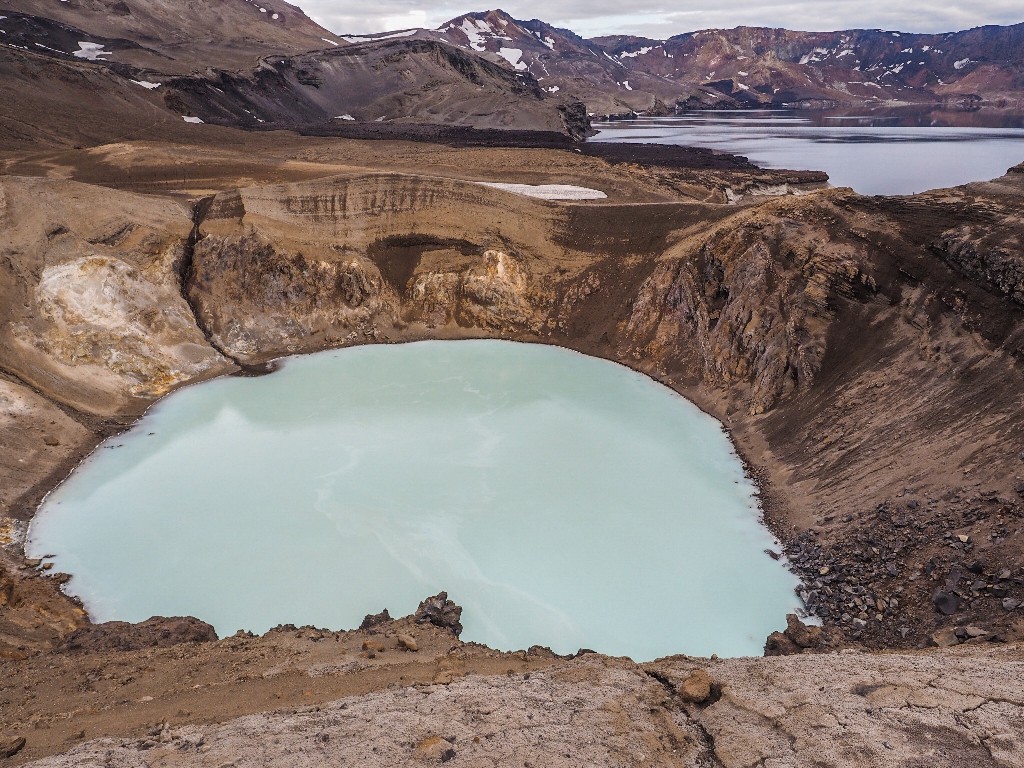
3. Askja crater
There are countless beautiful sights accessible along the Ring Road, leaving the highlands mostly untouched. There is some of the most unspoiled landscapes you’ll ever see.
Among these landscapes is the famous Askja Caldera (50 km2) in the Dyngjufjoll Mountains, on the northern side of the Vatnajökull National Park. The mountains emerged in eruptions under an Ice Age glacier cap. Askja itself was formed, for the most part, at the end of the Ice Age in a major ash eruption which caused the roof of the magma chamber at the heart of the central volcano to subside.
The caldera contains several volcanoes, including Víti (explosive volcanic crater). Water has accumulated in the crater, its temperature is variable – it is around 30°C on average. Víti is a popular bathing site, but if you intend taking a dip, please be aware that the sloping path is very slippery in wet weather.
Be mindful that you need a 4×4 vehicle to access Askja as there are some unabridged rivers to cross. The road to Askja goes from road 1 to road 901 and onto mountain road F905. Onward to F910 to Drekagil. You’ll encounter your first river crossing around 5 kilometers after you enter the F910, with the second one following just a few minutes after. There is a total of three water crossings on this route, but the first one you’ll see is quite shallow and easy to pass, so it is not even marked on maps as a river crossing.
From Drekagil goes mountain road F894 (8 km) to the car park at Vikraborgir.
Another option is to go from road 1 to mountain road F88 via Herðubreiðarlindir to Drekagil. This is not recommended as this F road has several fords and river crossings that are not passable with a 4×4. You need a special vehicle with sufficient clearance and a snorkel to be able to cross them. Stick to the route shown above (F905/F910) as it is the easiest.
The drive takes about three hours each way from Road 1.
The hike to Víti takes approx. 45 minutes each way. It is fairly easy as the volcanic valley is mostly flat. The area was used during training for the Apollo program in the 60’s to prepare astronauts for the lunar missions due to its volcanic composition.
From the rim of Lake Öskjuvatn is a stunning view of Dyngjufjoll Mountains and the crater Víti, which name in fact, the name means “hell.” If the temperatures of the water is decent, it is possible to bathe in the crater. It is important to seek advise from the rangers first.
This part of the country is only accessible for a few months of the year, mostly from May to September, depending on the weather and road conditions.
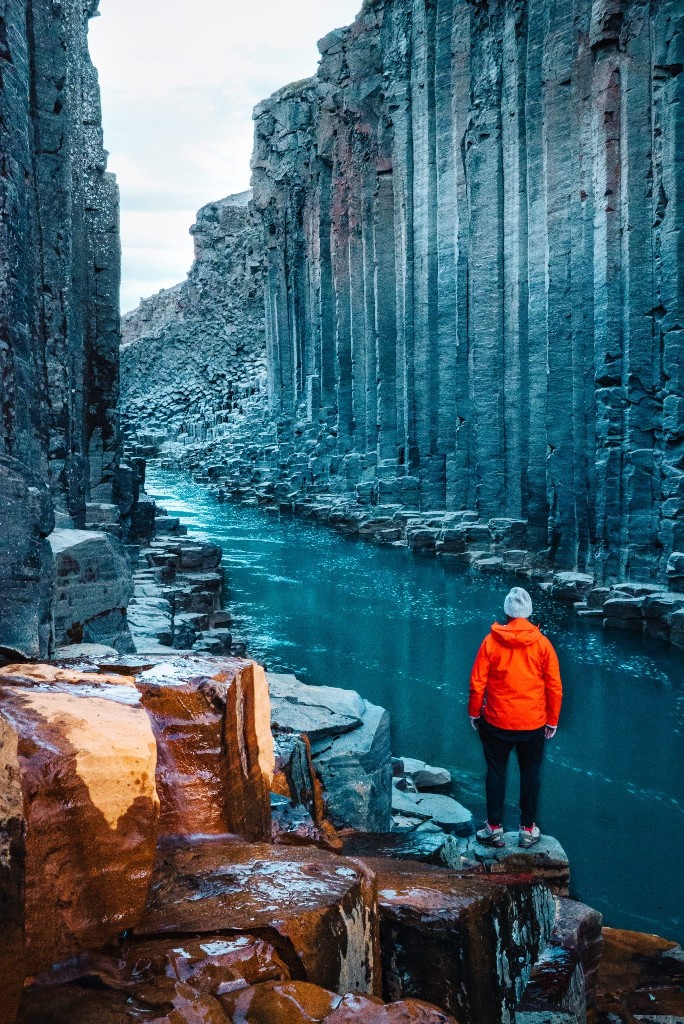
2. Stuðlagil basalt Canyon
Stuðlagil canyon is one of the most stunning sight in the country which merged from under the river Jökulsá just a few years ago, when its level fell and revealed this wonder of nature. Stuðlagil hosts one of the largest number of basalt rock columns in Iceland. There are two options how one can get to the canyon. From the farm Grund there is approx. 250 meters walk to the viewpoint where you can look down on the diverse dark colored columns and the contrast with the clear blue color of the river. You can also park your car on the parking lot at the farm Klaustursel. The hike is approx. 5 kilometers one way but this way takes you closer to the canyon. Please bear in mind that the nature on this part is very delicate and keep on marked paths to respect the nature and the birds living there.
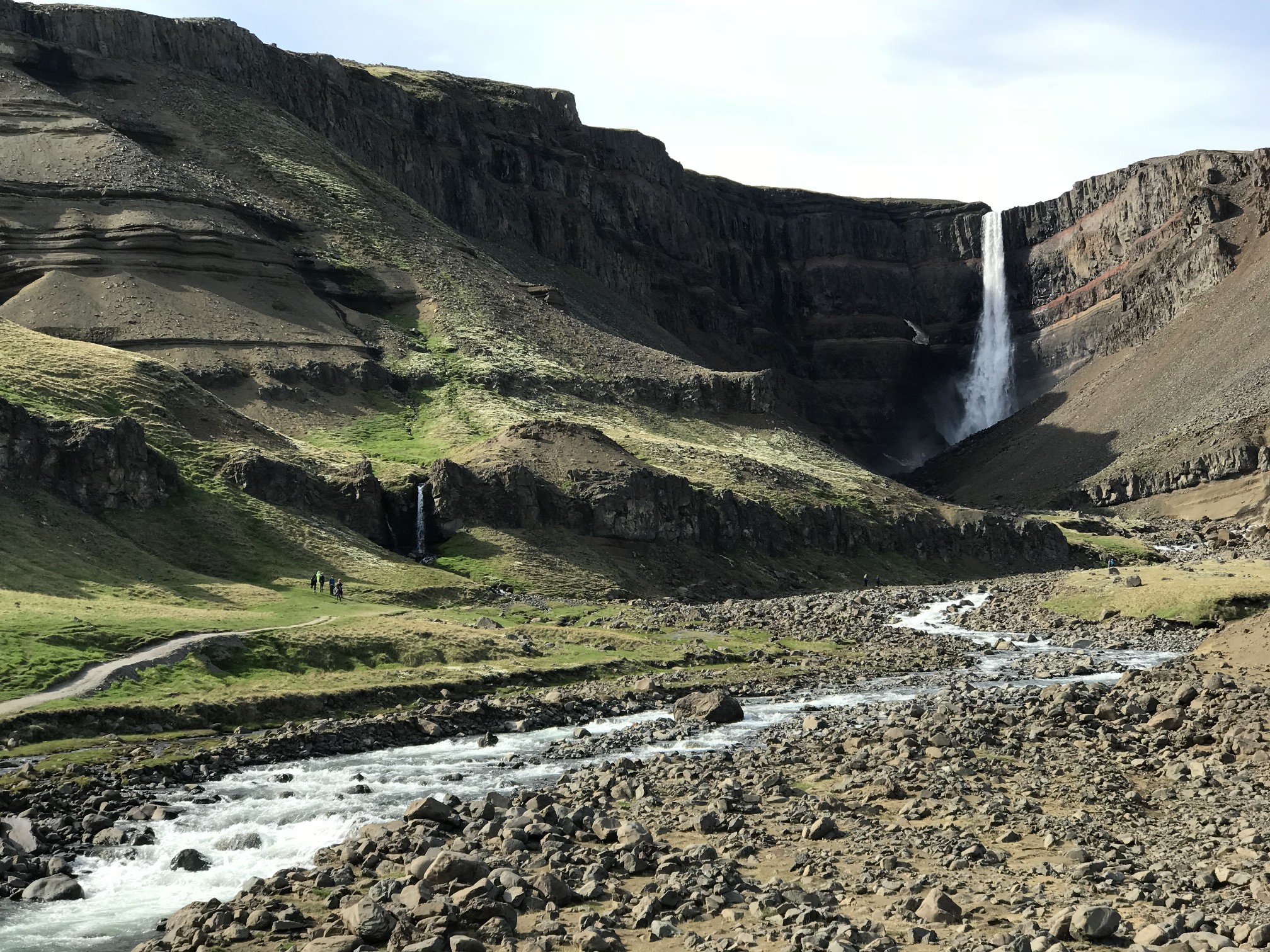
1. Hengifoss
Hengifoss waterfall is a beautiful waterfall, 128 meters high, making it the 2nd highest waterfall in Iceland. It is located next to Lagarfljót lake and faces Hallormsstaðarskógur forest. Hengifoss is 145 meters above sea level and the hike to the waterfall is a climb uphill for an hour or so. The hike is 2.5 km. each way and it starts from the parking lot. A flight of stairs lie from the gate and the path is adjacent to the gorge and at times pretty close to the edge of the gorge. Elves are said to live in the gorge.
Litlanesfoss is a waterfall that is about 1.2 km along the trail. It is not visible from the road like Hengifoss, which makes is a nice bonus. This 30-meter-high waterfall is flanked by big beautiful basalt columns cascades in two steps into a small pond. The basalt columns are up to 20 meters high, which makes them amongst the highest basalt columns in the country.
Hengifoss waterfall is characterized by the rock layers of red clay between layers of basalt creating red strata patterns. These are 5-6 million-year-old basalt layers from volcanic eruptions in the Tertiary Period. In the gorge there is wood coal and fossilization and remnants of trunks from a large forest sticking out of the wood coal sediments.
The waterfall is 128 meters high and is the second highest waterfall in Iceland. Not counting the waterfall in Mosárjökull glacier.
It is possible to walk behind the waterfall, where there is a small cave.
